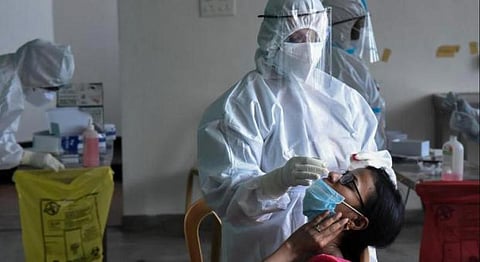
- HOMEGROWN WORLD
- #HGCREATORS
- #HGEXPLORE
- #HGVOICES
- #HGSHOP
- CAREERS
- ABOUT US
- CONTACT US

The Brihanmumbai Municipal Corporation (BMC), Mumbai’s apex civic body, was put to the test on the night of April 16. Six of its hospitals were on the verge of running out of oxygen, placing the lives of 168 patients at risk. The BMC operated from 1 am that night until 5 o’clock the next morning under the direction of Municipal Commissioner Iqbal Singh Chahal to arrange cardiac ambulances to transport the patients to various hospitals in the city. The next day, Chahal, a 1989 batch IAS official with a reputation for being a tough administrator, sounded visibly relieved to report that no patient had died at a regular meeting. Mumbai, which was hit by both waves of COVID-19, has recently emerged as a COVID management model. “The BMC is doing some great work ... [other civic authorities] can learn from them.” One mark of success is that against Mumbai’s daily oxygen need of 230 metric tons (MT), the BMC can supply up to 275 MT per day. Effective oxygen management is one of 25 initiatives the civic body has implemented to beef up the city’s medical infrastructure and systems. Together, these protocols make up the ‘Mumbai COVID Model,’ observed a Supreme Court bench of Justices D.Y. Chandrachud and M.R. Shah on May 5.
Mumbai has reported about 3,61,000 new cases and 2,349 deaths since February 10, the unofficial start of the second wave of the pandemic. The city’s low mortality rate — 0.6%, among the lowest in the world — is the only positive note in this scenario.
What is the Mumbai Model?
The Mumbai model is a culmination of a number of actions taken by the BMC since April 2020, including decentralisation of the system, the establishment of vaccine centres, the expansion of health facilities, bold decisions to save people from infection, and a close eye on the gaps that we are steadily working to close as soon as possible. They realised the importance of oxygen support and ventilators for COVID-19 patients during the first wave itself. They upgraded their facilities with Liquid Medical Oxygen (LMO) tanks as soon as possible, rather than relying on a cylinder-based model. Their reliance on the cylinders had significantly decreased by the time the second wave arrived.
Mumbai’s total active case count peaked on April 10 at 92,464 cases, though it has since dropped sharply to 45,534 on May 10. In May 2021, the city’s share of new cases in the national tally fell to less than one percent, down from 20% in May 2020.
What Did The BMC Do Differently?
i. Delegated crisis management teams and closely monitored hospitals that were receiving SOS calls.
ii. The Maharashtra COVID-19 task force recommended that high-flow nasal oxygen machines be discontinued and that non-invasive ventilation be used instead.
iii. When Mumbai’s active caseload was the same as New Delhi’s in mid-April, it managed to get by with 270 metric tonnes of oxygen. As of May 12, the daily positivity rate was at 6%. Since early April, the price has dropped by 22%.
iv. After realising the value of oxygen last year, the BMC upgraded the centres with 24 Liquid Medical Oxygen (LMO) tanks after the first wave. During the test, half of the unused LMOs were used during the second wave.
v. The BMC has taken over 80% of private hospital beds to include them in the dashboards. This facilitates the allocation of ICU and oxygenated beds more quickly. In addition, to cope with the raging second wave, the total number of beds was raised by 1.5 times. The city has also benefited from not deconstructing the jumbo centres after the first wave.
vi. Mumbai has now developed six emergency stock points, each of which holds 50 MT of oxygen and serves four wards; this stock is dispatched within 2-3 minutes of an SOS.
Challenges Ahead
As the number of COVID cases grows, Chahal’s next major challenge will be Mumbai’s vaccination campaign. The shortage of supplies is already causing issues, with Pravin Darekar, the leader of the opposition in the legislative council, alleging on May 10 that the BMC was not distributing existing supplies evenly. Chahal, on the other hand, is confident. “I have an outstanding team. We will overcome the hurdles,” he says.
